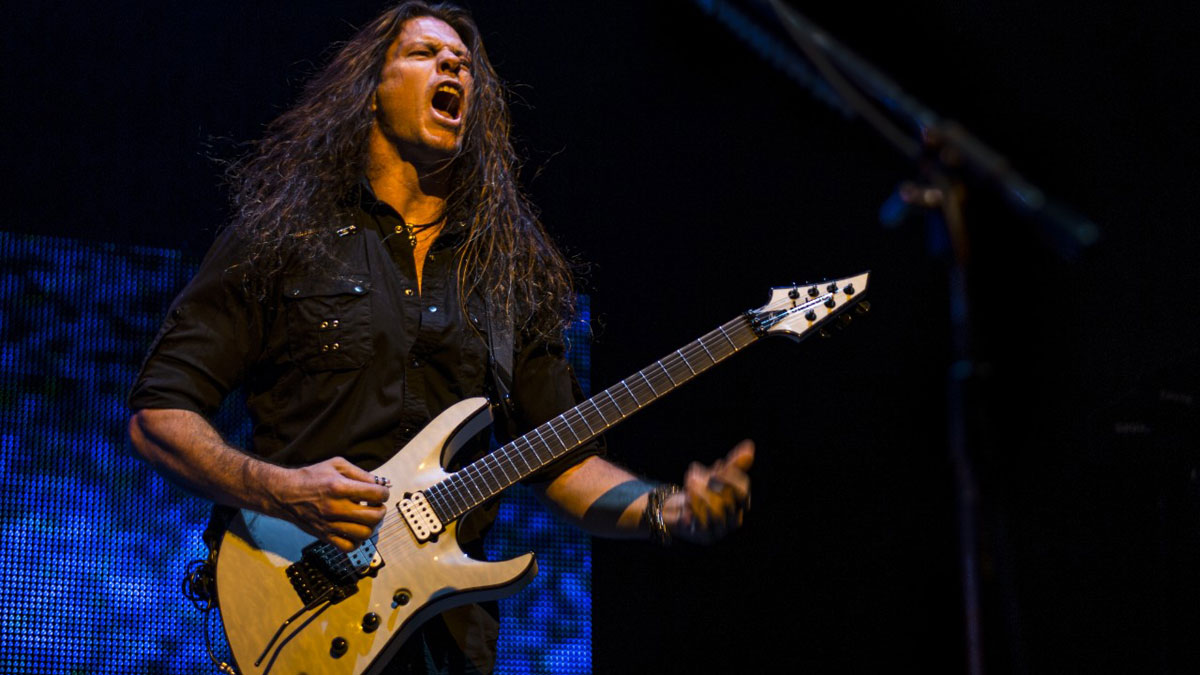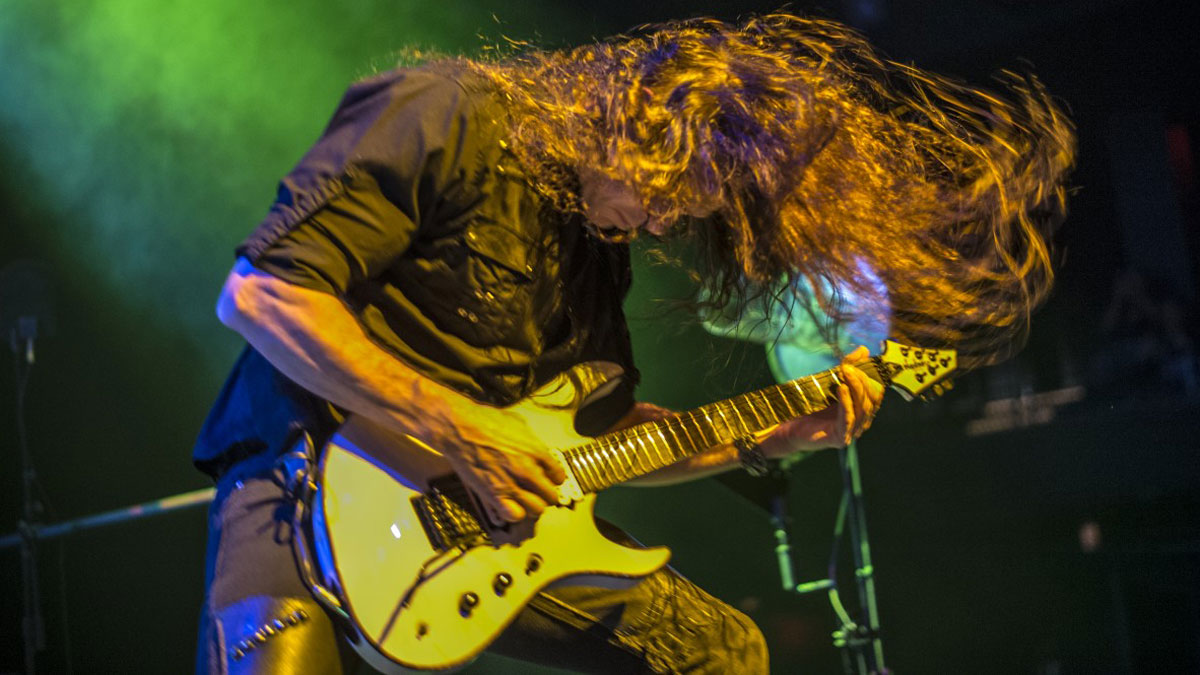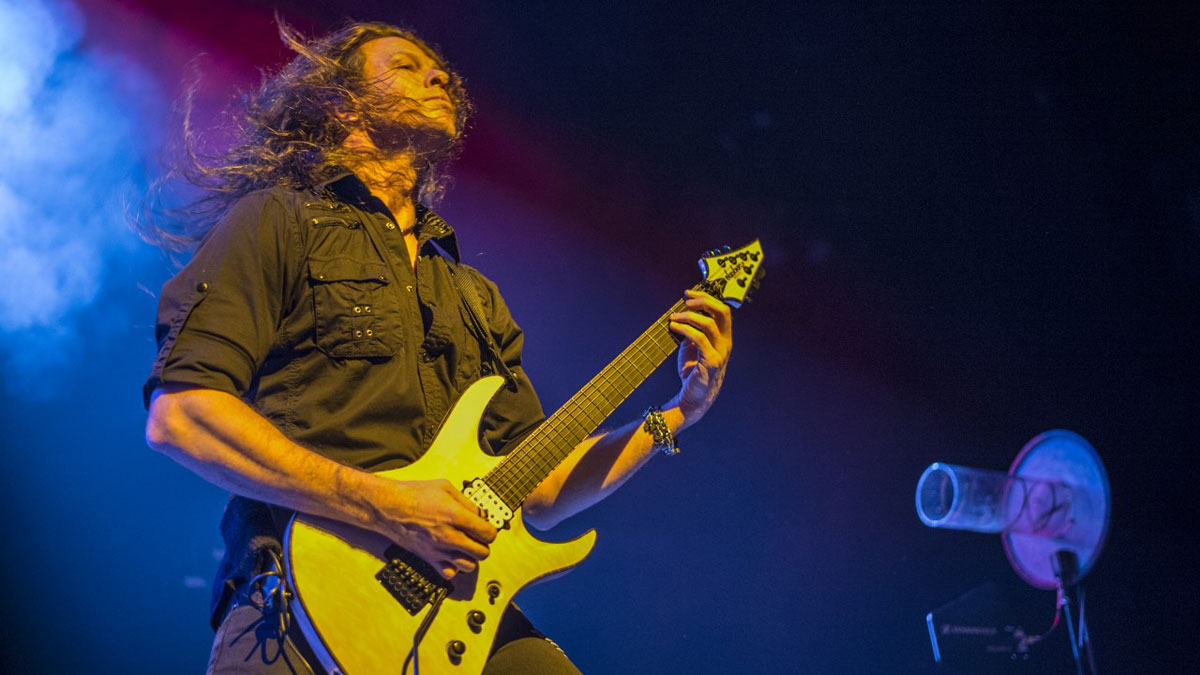Chris Broderick on seven-string guitars and Jackson signature models
The ex-Megadeth man and seven-string sensei talks

Introduction
The former Megadeth man is now with new band Act Of Defiance, but 7-string guitars have been a big part of Chris Broderick's playing life for 25 years.
As part of our recent series of articles focussing on these instruments of expanded range we spoke to Chris about his first encounters with seven-strings, the playing advantages and designing his custom PAF Pro pickups.
When I heard Dream Theater’s Awake it totally changed my opinion about what a seven-string could do
When did you first pick up a sevenstring guitar?
“I would say it was either 1990 or ’91. I’d heard about them earlier but had always thought they were for doom metal. They always sounded low and boomy and not defined, but when I heard Dream Theater’s Awake it totally changed my opinion about what a seven-string could do, and sonically where it sits. I just became an instant fan and had to have one.”
Do you remember what your first seven-string was?
“An Ibanez, I can’t remember the exact model but it was a JEM, I picked up a couple of all-white JEMs. I kind of wish that I’d hung on to them because they were produced in very limited numbers. But I ended up selling them off and moving on.”

Seven steps
What effect did a seven-string have on your playing initially?
If you’re doing chord voicings, it gives you a lot more options. It gives you a lot more range
“In a way it was a total game changer. When you think about the range a seven-string has, it’s only a fourth below a six-string, but sonically that’s huge-sounding. And secondly, the way you can arrange and do fingerings on the fretboard, it almost gives you a whole other octave if you’re doing arpeggio patterns.
“If you’re doing chord voicings, it gives you a lot more options. It gives you a lot more range. And another thing was with two-handed tapping it seemed to be able to accommodate a lot of piano pieces more easily. The range was just large enough that most piano pieces I wanted to work on, whether it was The Inventions [Bach] or some Mozart of Chopin it would encompass that range a lot more easily than a six-string would.”

Signature moves
Did you have an idea of what you wanted from your Jackson signature?
I was very decisive in what I wanted out of the guitar, but I’d never seen all of it combined together
“Oh yes, I had a lot of clear ideas. I wasn’t sure what the outcome would be, but I was sure about the individual components; the radius of the fretboard, the finish and fairly close to what the body would look like. Because that’s kind of based on a doubleneck guitar that I built when I was in high school. So I was very decisive in what I wanted out of the guitar, but I’d never seen all of it combined together.”
So you’ve actually got some experience in guitar building yourself?
“I wouldn’t go that far, I was an overly optimistic teenager! I did woodshop in high school and then I went to a vocational school for a semester in auto body painting so I could learn how to paint my guitar. That was the only reason I took it. So I fi nished off my guitar. I repainted it twice and that’s all the painting I’ve ever done after that as far as refi nishing instruments, or even cars for that matter.”
What was special about the doubleneck’s shape you made that influenced your signature model?
“The asymmetrical body style and some of the cuts in it. I just love the way it looks and the way it sits when it’s hanging off your body. The body of my signature series is pulled from that.”

Picking the pickups
What was the process of developing the signature’s custom pickups with the guys at DiMarzio?
We had a good starting point - I had a PAF Pro seven-string version in the neck and a Deactivator in the bridge that I really liked
“It was pretty quick and Steve [Blucher, DiMarzio’s resident pickup guru] got right at what I wanted with the first set of pickups he sent me, they were perfect. We had a pretty good starting point because when I started working with Steve, I had a PAF Pro seven-string version in the neck and a Deactivator in the bridge that I really liked and he had wound those for me, because I don’t think they make the PAF Pro in a seven-string configuration.
“I knew I’d love that tone. But I noticed I wanted a bit more of the fundamental tone so I talked with him about that and he uses Fractal Axe-Fxs like I do. So I through a filter in front of the amp simulation and just kind of honed in on exactly the frequencies I wanted. Then I sent him that effects file and he loaded it in his Fractal and he knew exactly what I wanted at that point so he wound the pickups to achieve it from there.
“It ended up being a bit of a bump in the 550MHz range; right in the midrange of the meat of the guitar. And to balance it back out I just pushed the top end up a little bit as well.”
Total Guitar is Europe's best-selling guitar magazine.
Every month we feature interviews with the biggest names and hottest new acts in guitar land, plus Guest Lessons from the stars.
Finally, our Rocked & Rated section is the place to go for reviews, round-ups and help setting up your guitars and gear.
Subscribe: http://bit.ly/totalguitar


